Showing Spotlights 281 - 288 of 2781 in category All (newest first):
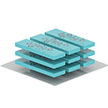 Organic semiconductors (OSCs) are a class of semiconductor materials consisting of conjugated molecules or polymers. Compared to inorganic semiconductors, OSCs have distinctive advantages including being solution-processable, suitable for low-cost and large-area fabrication of electronics, and applicable to flexible/stretchable electronics, among others. Given the importance of doping techniques for semiconductors, it is highly attractive to establish doping methodologies for OSCs similar to that for silicon. This would simplify the difficulty and cost of synthesizing different types of OSCs for various applications, as well as lead to interesting structures such as organic PN homojunctions.
Organic semiconductors (OSCs) are a class of semiconductor materials consisting of conjugated molecules or polymers. Compared to inorganic semiconductors, OSCs have distinctive advantages including being solution-processable, suitable for low-cost and large-area fabrication of electronics, and applicable to flexible/stretchable electronics, among others. Given the importance of doping techniques for semiconductors, it is highly attractive to establish doping methodologies for OSCs similar to that for silicon. This would simplify the difficulty and cost of synthesizing different types of OSCs for various applications, as well as lead to interesting structures such as organic PN homojunctions.
Jun 9th, 2022
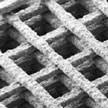 Although 4D printing is considered very promising for various biomedical applications - such as tissue scaffolds, neural scaffolds, grafts and stents, cardiac patches and valves, even bionic constructs - its broad-scale adoption for clinical use and tissue engineering purposes is complicated by a notable limitation of printable smart materials and the simplistic nature of achievable responses possible with current sources of stimulation. Nevertheless, 4D printing may offer a more favorable fabrication approach over 3D printing, as 4D constructs can respond to internal and/or external stimuli.
Although 4D printing is considered very promising for various biomedical applications - such as tissue scaffolds, neural scaffolds, grafts and stents, cardiac patches and valves, even bionic constructs - its broad-scale adoption for clinical use and tissue engineering purposes is complicated by a notable limitation of printable smart materials and the simplistic nature of achievable responses possible with current sources of stimulation. Nevertheless, 4D printing may offer a more favorable fabrication approach over 3D printing, as 4D constructs can respond to internal and/or external stimuli.
Jun 7th, 2022
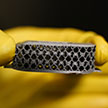 Researchers propose a first-of-a-kind smart orthopedic implant with both diagnostic and energy harvesting capabilities. This mechanically tunable, multifunctional metamaterial implant can sense and harvest energy from body motions. These implants only use their constituent components to achieve these advanced functionalities - they don't require any external power source or bulky electronics. Furthermore, the implants can be 3D printed and customized for each patient based on the clinical requirements and anatomical matching.
Researchers propose a first-of-a-kind smart orthopedic implant with both diagnostic and energy harvesting capabilities. This mechanically tunable, multifunctional metamaterial implant can sense and harvest energy from body motions. These implants only use their constituent components to achieve these advanced functionalities - they don't require any external power source or bulky electronics. Furthermore, the implants can be 3D printed and customized for each patient based on the clinical requirements and anatomical matching.
Jun 3rd, 2022
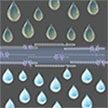 Graphene-based membranes have attracted considerable attention as promising candidates for new filtration technologies for filtering out nanoparticles, organic molecules, and even small inorganic salt ions. Putting a nature-inspired spin on the fabrication of high-performance graphene membranes for tricky oil/water separations - even in stable emulsions - researchers have demonstrated a graphene nanomesh membrane that possessed high hydrophilicity, super-oleophobicity and low oil adhesion underwater.
Graphene-based membranes have attracted considerable attention as promising candidates for new filtration technologies for filtering out nanoparticles, organic molecules, and even small inorganic salt ions. Putting a nature-inspired spin on the fabrication of high-performance graphene membranes for tricky oil/water separations - even in stable emulsions - researchers have demonstrated a graphene nanomesh membrane that possessed high hydrophilicity, super-oleophobicity and low oil adhesion underwater.
May 31st, 2022
 One interesting alternative to traditional antibiotics is phage therapy. Bacteriophages are viruses that selectively target and solely kill bacteria, even multi-drug resistant ones. However, scientists don't yet have the full picture of how it works and what the potential risks are. In view of these challenges, researchers have considered an alternative approach where phages are destroyed immediately after use, thus controlling dosage and circumventing undesirable consequences while maintaining the advantages of whole phage as antibacterial delivery vehicle.
One interesting alternative to traditional antibiotics is phage therapy. Bacteriophages are viruses that selectively target and solely kill bacteria, even multi-drug resistant ones. However, scientists don't yet have the full picture of how it works and what the potential risks are. In view of these challenges, researchers have considered an alternative approach where phages are destroyed immediately after use, thus controlling dosage and circumventing undesirable consequences while maintaining the advantages of whole phage as antibacterial delivery vehicle.
May 30th, 2022
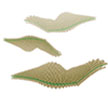 Decades of research on transition metal borides (TMBs) and their phases have led to a novel class of 2D transition metal borides termed MBenes - the boron-analogues of MXenes. Due to the very early stage of development, little is known about MBenes' physical and chemical properties, although excellent mechanical, electronic, metallic/semiconducting, capacitive, and thermoelectric properties have been theoretically predicted for them. However, even the most accurate theoretical predictions and optimistic predictions demonstrating MBenes' outstanding physical properties cannot be realized if researchers are not able to experimentally synthesize them - something the research community still is waiting for.
Decades of research on transition metal borides (TMBs) and their phases have led to a novel class of 2D transition metal borides termed MBenes - the boron-analogues of MXenes. Due to the very early stage of development, little is known about MBenes' physical and chemical properties, although excellent mechanical, electronic, metallic/semiconducting, capacitive, and thermoelectric properties have been theoretically predicted for them. However, even the most accurate theoretical predictions and optimistic predictions demonstrating MBenes' outstanding physical properties cannot be realized if researchers are not able to experimentally synthesize them - something the research community still is waiting for.
May 26th, 2022
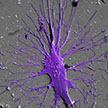 We are in the early stages of neural computing and have time to think through the ethical issues involved. Among other things, if neural computers become common, we will grapple with tissue donation issues. Scientists have found that human neurons were faster at learning than neurons from mice. Might there also be differences in performance depending on whose neurons are used? Might Apple and Google be able to make lightning-fast computers using neurons from our best and brightest today? Would someone be able to secure tissues from deceased genius's like Albert Einstein to make specialized limited-edition neural computers?
We are in the early stages of neural computing and have time to think through the ethical issues involved. Among other things, if neural computers become common, we will grapple with tissue donation issues. Scientists have found that human neurons were faster at learning than neurons from mice. Might there also be differences in performance depending on whose neurons are used? Might Apple and Google be able to make lightning-fast computers using neurons from our best and brightest today? Would someone be able to secure tissues from deceased genius's like Albert Einstein to make specialized limited-edition neural computers?
May 24th, 2022
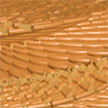 Researchers have designed and fabricated a bio-inspired, high strength and high toughness lignocellulose-based material that can serve as a 'wood armor' that rivals the performance of conventional engineering materials such as glass, ceramics or alloys. This wooden armor has biomimetic flexible-rigid layered Bouligand-like structures similar to the scales of pirarucu, a fish that can withstand piranha attacks. In ballistic tests it withstood 9 mm caliber bullets with an impact velocity of 214 meters per second.
Researchers have designed and fabricated a bio-inspired, high strength and high toughness lignocellulose-based material that can serve as a 'wood armor' that rivals the performance of conventional engineering materials such as glass, ceramics or alloys. This wooden armor has biomimetic flexible-rigid layered Bouligand-like structures similar to the scales of pirarucu, a fish that can withstand piranha attacks. In ballistic tests it withstood 9 mm caliber bullets with an impact velocity of 214 meters per second.
May 24th, 2022
 Organic semiconductors (OSCs) are a class of semiconductor materials consisting of conjugated molecules or polymers. Compared to inorganic semiconductors, OSCs have distinctive advantages including being solution-processable, suitable for low-cost and large-area fabrication of electronics, and applicable to flexible/stretchable electronics, among others. Given the importance of doping techniques for semiconductors, it is highly attractive to establish doping methodologies for OSCs similar to that for silicon. This would simplify the difficulty and cost of synthesizing different types of OSCs for various applications, as well as lead to interesting structures such as organic PN homojunctions.
Organic semiconductors (OSCs) are a class of semiconductor materials consisting of conjugated molecules or polymers. Compared to inorganic semiconductors, OSCs have distinctive advantages including being solution-processable, suitable for low-cost and large-area fabrication of electronics, and applicable to flexible/stretchable electronics, among others. Given the importance of doping techniques for semiconductors, it is highly attractive to establish doping methodologies for OSCs similar to that for silicon. This would simplify the difficulty and cost of synthesizing different types of OSCs for various applications, as well as lead to interesting structures such as organic PN homojunctions.
 Subscribe to our Nanotechnology Spotlight feed
Subscribe to our Nanotechnology Spotlight feed





